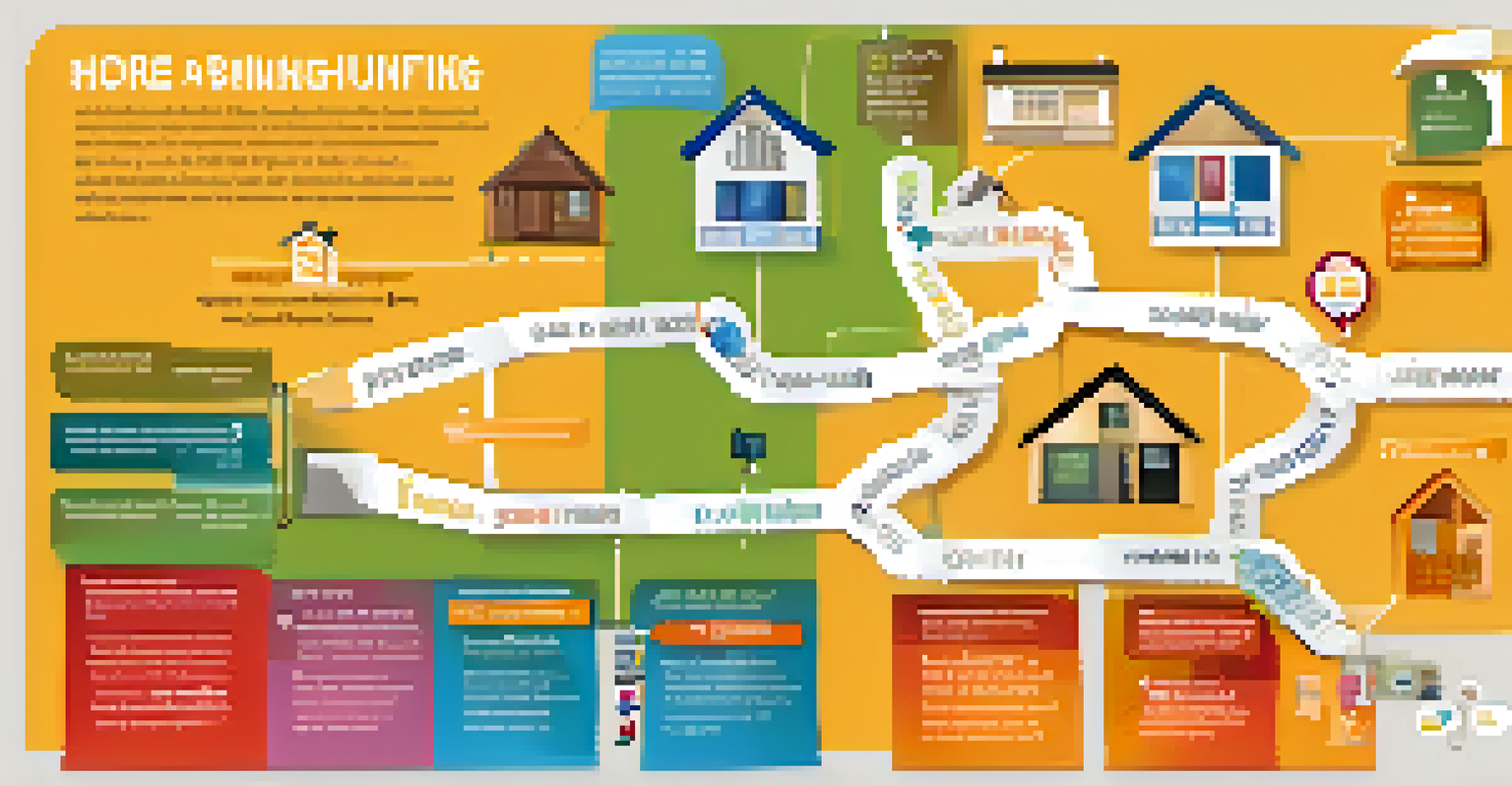Best Practices for Writing Real Estate Blog Posts

Understand Your Audience for Effective Blogging
Before you start typing away, it's crucial to know who you're speaking to. Are your readers first-time homebuyers, seasoned investors, or renters looking for advice? Understanding your audience helps you tailor your content to their specific needs and interests, making your posts more engaging.
Content is king, but engagement is queen, and the lady rules the house!
For example, if you're writing for first-time homebuyers, focus on topics like mortgage options or home-buying checklists. On the other hand, seasoned investors may appreciate insights into market trends or property management tips. This targeted approach not only captures attention but also builds trust with your readers.
Ultimately, the more you understand your audience, the better you can connect with them through your blog. This connection is vital in the competitive real estate market, where personalized content can set you apart from the rest.
Create Catchy Headlines That Grab Attention
Think of your headline as the storefront of your blog post—it's the first thing people see. A catchy headline can make all the difference in whether someone clicks through to read your content or scrolls past. Aim for headlines that are intriguing, clear, and relevant to your audience's interests.

For instance, instead of a bland title like 'Real Estate Tips,' try something like 'Unlocking the Secrets to Buying Your Dream Home.' This not only piques curiosity but also implies actionable insights, enticing readers to dive in.
Know Your Audience
Understanding your audience helps tailor content to their needs, making your posts more engaging.
Remember, your headline shouldn't just be eye-catching; it should also accurately reflect the content of your blog post. Misleading headlines might draw clicks initially, but they can lead to high bounce rates, which negatively impacts your credibility and SEO.
Incorporate Local Market Trends and Insights
Real estate is inherently local, and your blog should reflect that. Sharing insights about your local market trends can establish you as an authority in your area. This could include discussing average home prices, neighborhood developments, or upcoming events that impact real estate.
People don't care how much you know until they know how much you care.
For example, if you notice a rise in new construction projects in your city, write a post about how this could affect housing availability and prices. By providing valuable local content, you not only attract local readers but also engage those considering moving to your area.
Additionally, incorporating local keywords can enhance your SEO efforts, making it easier for potential clients to discover your blog when searching for real estate in your area.
Utilize High-Quality Images and Visuals
A picture is worth a thousand words, especially in real estate blogging. High-quality images can substantially enhance your posts, making them more visually appealing and engaging. Use images of properties, neighborhoods, or even infographics that convey valuable data to captivate your readers.
For instance, if you're discussing the home-buying process, consider including a flowchart that outlines the steps involved. This not only breaks up the text but also makes complex information easy to digest, encouraging readers to stay on your page longer.
Create Compelling Headlines
Catchy headlines grab attention and encourage readers to click through to your content.
Moreover, don't forget to optimize your images for SEO by using descriptive file names and alt text. This practice not only improves accessibility but can also help your blog rank better in search engine results.
Write with a Conversational and Authentic Tone
When writing blog posts, aim for a conversational tone that feels approachable and relatable. Avoid jargon and complex terminology unless necessary, and if you do use them, make sure to explain. This helps demystify the real estate process for your readers, making them feel more at ease.
For example, instead of saying 'escrow,' you could say, 'The period when the buyer's funds and the property title are held by a third party.' This not only clarifies the term but also enhances the reader's understanding of the real estate process.
Authenticity is key; let your personality shine through. Share anecdotes or personal experiences related to real estate. This not only builds a connection with your readers but also makes your content more memorable.
Encourage Engagement Through Questions and Comments
Engagement is a two-way street, and your blog should invite readers to participate. Encourage questions, comments, and discussions at the end of your posts. This creates a sense of community and allows readers to share their experiences or seek further clarification on topics that interest them.
For instance, end your blog post with a question like, 'What challenges have you faced in the home-buying process?' This prompts readers to reflect and share their thoughts, fostering a deeper connection.
Engage and Encourage Interaction
Inviting questions and comments fosters a sense of community and enhances reader engagement.
Additionally, responding to comments can further enhance engagement and show that you value your readers' input. This interaction can lead to loyal followers who return to your blog for more insights and advice.
Optimize for SEO to Increase Visibility
Search engine optimization (SEO) is essential for ensuring your blog reaches a wider audience. Focus on incorporating relevant keywords naturally throughout your posts, including in your headlines, subheadings, and body text. This increases the chances of your blog appearing in search results when potential clients look for real estate advice.
For example, if you're writing about staging homes for sale, use keywords like 'home staging tips' or 'how to stage a home' throughout the post. However, be careful not to overstuff keywords, as this can harm readability and may be penalized by search engines.

Additionally, consider using internal links to other relevant posts on your blog, as well as external links to reputable sources. This not only enhances your credibility but also helps improve your SEO ranking, making your blog more discoverable.